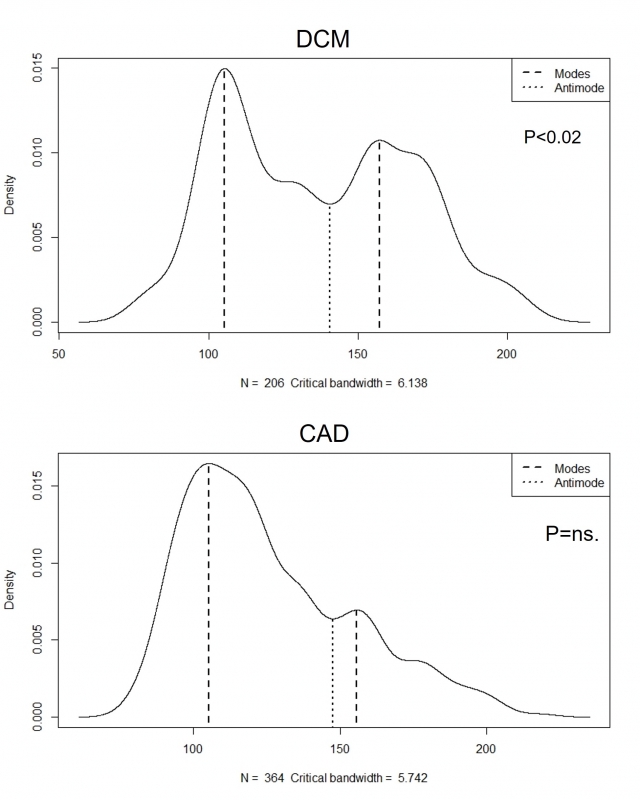BIMODAL DISTRIBUTION OF QRS COMPLEX DURATION IN PATIENTS WITH DILATED CARDIOMYOPATHY UNDERGOING AN ICD IMPLANT PROCEDURE.
Background
In patients with heart failure with reduced ejection fraction (HFrEF), QRS duration is of the uttermost importance. Substantial proportion of patients with HFrEF and sufficiently prolonged QRS complex, especially those with left bundle branch block may significantly benefit from cardiac resynchronization therapy. The aim of the study was to analyse the distribution of the QRS durations in patients with HFrEF undergoing ICD implant procedure to better understand the phenomenon of QRS prolongation.
Methods
All patients with HFrEF caused by coronary artery disease (CAD) or dilated cardiomyopathy (DCM) undergoing the implant procedure in our centre between January 2013 and December 2021 were analysed for the inclusion into the study. The exclusion criteria were (1) coincidence of CAD with DCM, (2) upgrade from any other cardiac rhythm management device, (3) unavailability of the ECG recording on ECG recording on Mortara ELI350 or ELI380 (4) more than one ventricular premature beat in the recording. The study used automatically measured QRS duration using the EKG machine.
Results
The study included 570 patients, 206 with DCM and 364 with CAD. All patients taken together had tendency to bimodal distribution of QRS duration (p=0.052). In CAD patients, the distribution was unimodal (p=ns.), whereas the DCM group had bimodal distribution (p<0.02). The border zone between both distributions was at 134-137ms (no patient with QRS 135-136ms). The bimodality was even more pronounced in women with DCM (p<0.002).
Conclusions
Bimodal distribution of QRS duration values in patients with DCM supports the idea of sudden change of bundle conduction rather than slow progression of local changes. In CAD, scars and other local impairments in conduction may hide these changes and no clear border zone can be set.


